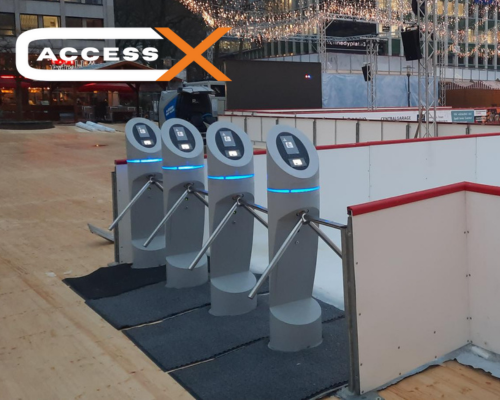The Role of Stainless Steel in Turnstile Construction
Stainless steel is widely used in tripod turnstiles, full-height turnstiles, and swing gates due to its:
-
Corrosion resistance
-
Mechanical strength
-
Low maintenance requirements
-
Sleek, modern appearance
However, selecting the appropriate grade of stainless steel can dramatically impact performance, especially in different environmental conditions.
Common Stainless Steel Types for Turnstiles
1. AISI 304 Stainless Steel (Grade 304)
Composition:
-
18% Chromium
-
8% Nickel
-
Low carbon content
Key Characteristics:
-
Excellent corrosion resistance in indoor or mild outdoor environments
-
Good mechanical properties
-
Affordable and widely available
Typical Applications:
-
Indoor turnstiles (e.g., office buildings, schools, data centers)
-
Covered or sheltered outdoor locations (e.g., parking garages)
-
Areas where environmental exposure is limited
Why Choose AISI 304?
AISI 304 is a cost-effective choice that balances corrosion resistance and strength. It performs well in environments where salt, chemicals, or high humidity are not a significant concern.
2. AISI 316 Stainless Steel (Marine Grade)
Composition:
-
16% Chromium
-
10% Nickel
-
2% Molybdenum
Key Characteristics:
-
Superior corrosion resistance due to molybdenum content
-
Ideal for harsh environments: high humidity, salt air, chemicals
-
Slightly more expensive than 304, but longer lasting in aggressive conditions
Typical Applications:
-
Coastal areas or seaside installations
-
Uncovered outdoor turnstiles exposed to rain, snow, or salt
-
Industrial settings where chemicals or corrosive agents are present
-
Transport hubs such as ferry terminals, ports, and subway entrances
Why Choose AISI 316?
While AISI 316 comes at a higher cost, it provides peace of mind in corrosive or high-risk environments. Its resistance to pitting and surface rust helps maintain both functionality and aesthetics over time.
AISI 304 vs AISI 316: Key Differences
| Feature | AISI 304 | AISI 316 |
|---|---|---|
| Corrosion Resistance | High | Very High (especially to chlorides) |
| Cost | Lower | Higher |
| Durability in Salty Air | Moderate | Excellent |
| Best For | Indoors, mild climates | Outdoors, coastal, industrial |
| Appearance Over Time | May dull or rust in harsh air | Maintains appearance longer |
Real-World Scenarios
📍 Use Case for AISI 304
A corporate office building installs sleek, modern tripod turnstiles in its lobby area. Since the environment is controlled and clean, AISI 304 is ideal. It maintains its finish without risk of corrosion and reduces project costs.
🌊 Use Case for AISI 316
A ferry terminal located near the ocean installs full-height turnstiles at its outdoor passenger entrance. The salty air and frequent exposure to water require AISI 316 to prevent corrosion and ensure long-term reliability.
Conclusion: Match the Material to the Environment
Choosing the right stainless steel for your turnstile project is about more than just appearance. It’s a matter of performance, durability, and cost-efficiency.
-
Use AISI 304 when cost is a concern and the environment is controlled or mild.
-
Opt for AISI 316 in coastal, industrial, or outdoor environments where corrosion is a real threat.
Investing in the right grade upfront can save significant maintenance and replacement costs over time — and ensure your access control system remains secure, professional-looking, and operational for years to come.

